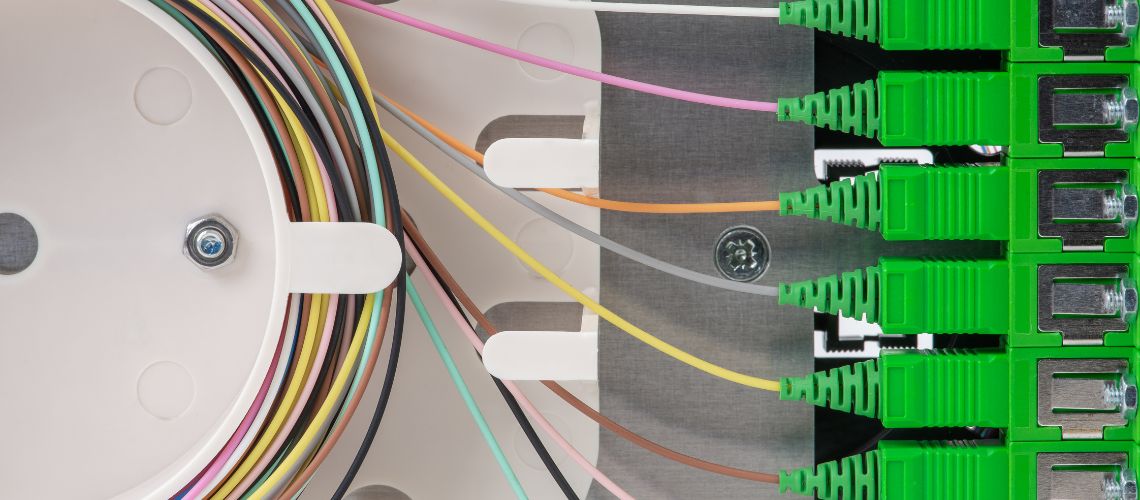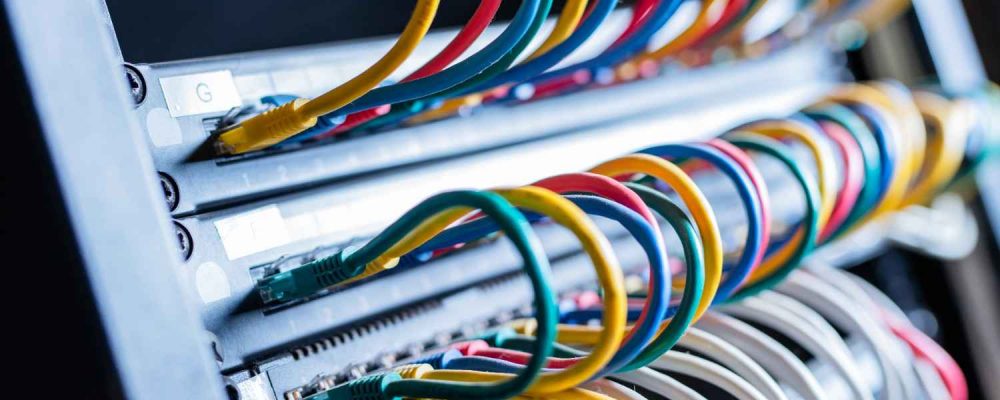Summary: Fiber color codes, defined by the TIA-598-C standard, help technicians quickly identify individual fibers, buffer tubes, and connectors in multi-strand cables. Using proper color coding makes installation easier, speeds up troubleshooting, reduces downtime, and supports future network growth. Network Drops specializes in fiber cabling across NJ and PA, ensuring organized, reliable networks that are ready for upgrades and expansion.

Today, fiber optic networks are considered the backbone of high-speed data infrastructure. With multi-strand cables carrying dozens or perhaps hundreds of fibers, any sort of confusion is costly. Hence, fiber color codes are used-for easy identification of each fiber by a technician, and to prevent cross-connections and ease installation and maintenance.
According to a report from the United States National Telecommunications and Information Administration, broadband connections in the United States have grown to over 118 million households, showing the increasing demand for proper fiber infrastructure. Correct color coding assures a great level of reliability for these high-density networks.

A fiber color code is a standardized system used to identify individual fibers, buffer tubes, and cable jackets. The widely adopted TIA-598-C standard defines color sequences to maintain uniformity across installations in North America. This is critical for:
Using color codes reduces human error, which can cost businesses thousands of dollars in misconnected or damaged fiber links.
For cables with up to 12 fibers, the TIA-598-C standard specifies the following colors:
Fiber Number | Color |
1 | Blue |
2 | Orange |
3 | Green |
4 | Brown |
5 | Slate |
6 | White |
7 | Red |
8 | Black |
9 | Yellow |
10 | Violet |
11 | Rose |
12 | Aqua |
Tip: For cables with more than 12 fibers, the sequence repeats. Distinctive stripes or markings are added to each 12-fiber group for identification.
Fiber cables have multiple layers where color coding is applied:
Tube Number | Tube Color | Fibers Inside |
1 | Blue | 1–12 |
2 | Orange | 13–24 |
3 | Green | 25–36 |
4 | Brown | 37–48 |
5 | Slate | 49–60 |
6 | White | 61–72 |
Usage: Helps identify each bundle inside loose tube cables in large installations, such as campus networks or data centers.
Jacket Color | Fiber Type |
Yellow | Single-mode (OS1/OS2) |
Orange | Multimode (OM1/OM2) |
Aqua | Multimode laser-optimized (OM3/OM4) |
Lime Green | OM5 high-speed multimode |
Color coding also applies to connectors to identify fiber types:
Connector Type | Color | Notes |
Standard MM (OM1/OM2) | Beige/Black | Multimode, legacy cables |
OM3/OM4 | Aqua | Laser-optimized multimode |
OM4+ | Magenta | High-bandwidth applications |
Single-mode UPC | Blue | Polished, standard single-mode |
Single-mode APC | Green | Angled physical contact for low back reflection |
Why it matters: Mismatching APC and UPC connectors can lead to signal reflection issues and network failures.
Proper fiber color coding offers tangible advantages for businesses and network teams:
Unlike with other cable types, in fiber cables, the colors are used to identify fibers in order to reduce errors and save time in network configuration, especially in cables that carry a large number of fibers.
Should a fiber link fail, the color code will help the technician in identifying the correct strand quickly. Thus, any problem can be fixed faster with far less trial and error.
The color coding helps avoid unnecessary errors that would bring down the network if it had to be repaired. Fewer mistakes imply fewer interruptions for a user or a business that depends on the network.
As networks get bigger, in the process of adding more fibers, the color codes keep everything bounded. Even when hundreds of fibers have been installed, technicians still find it easy to identify each one for a future upgrade.
Color coding helps technicians avoid unplugging or damaging critical lines accidentally. This is a crucial factor in sensitive environments such as hospitals or industrial plants, where the consequences of these mistakes can be dire.
The U.S. Bureau of Labor Statistics reports that network infrastructure installation jobs are projected to grow by 5% from 2022 to 2032, highlighting the growing need for well-managed fiber networks.
Proper fiber color coding offers tangible advantages for businesses and network teams:
Unlike with other cable types, in fiber cables, the colors are used to identify fibers in order to reduce errors and save time in network configuration, especially in cables that carry a large number of fibers.
Should a fiber link fail, the color code will help the technician in identifying the correct strand quickly. Thus, any problem can be fixed faster with far less trial and error.
The color coding helps avoid unnecessary errors that would bring down the network if it had to be repaired. Fewer mistakes imply fewer interruptions for a user or a business that depends on the network.
As networks get bigger, in the process of adding more fibers, the color codes keep everything bounded. Even when hundreds of fibers have been installed, technicians still find it easy to identify each one for a future upgrade.
Color coding helps technicians avoid unplugging or damaging critical lines accidentally. This is a crucial factor in sensitive environments such as hospitals or industrial plants, where the consequences of these mistakes can be dire.
The U.S. Bureau of Labor Statistics reports that network infrastructure installation jobs are projected to grow by 5% from 2022 to 2032, highlighting the growing need for well-managed fiber networks.
Fiber color codes are essential for managing complex networks efficiently:
According to a 2022 Federal Communications Commission (FCC) report, fiber deployment in commercial buildings has grown by 15% annually, showing the increasing importance of accurate fiber management.

Often, 144-fiber cables end up in high-density data centers. Color-coding is vital so that a technician is able to trace the fiber without disturbing the other strands.
In Fiber-To-The-Home networks, color coding assures correct fiber distribution from central offices to residential units, which saves errors in service.
Hospitals require their structured cabling to meet compliance standards (HIPAA). Correct fiber color coding assures uptime for critical network systems such as patient monitoring.
Network Drops delivers fiber optic cabling solutions throughout New Jersey and Pennsylvania, guaranteeing that every project; big or small, complies with TIA/EIA standards.
Make that call to get your Free Site Audit today, and let our experts design the fiber network that is neat and well-positioned for future growth.
The TIA-598-C standard defines blue, orange, green, brown, slate, white, red, black, yellow, violet, rose, and aqua for fibers 1–12.
Technically yes, but for interoperability and safety, always adhere to TIA/EIA-598-C standards.
Groups of 12 fibers are marked with stripes or numbered tubes to distinguish each set.
Green indicates Angled Physical Contact, reducing back reflection and improving single-mode performance.
Fiber optic cables follow the TIA-598 standard, which assigns colors to identify each fiber in a bundle. The first 12 fibers always follow the same sequence: blue, orange, green, brown, slate, white, red, black, yellow, violet, rose, aqua. If there are more than 12 fibers, the colors repeat inside different buffer tubes. This system helps technicians quickly find, connect, and troubleshoot the right fiber.
"*" indicates required fields
Scott Fcasni is the driving force behind Shock I.T. Support’s commercial datacomm cabling division, delivering expert solutions that power reliable, high-performance network infrastructures. With extensive experience in structured cabling and a commitment to precision, Scott ensures that every project—whether for small businesses or large enterprises—meets the highest standards of quality and scalability.